Managed in Makeswift
There are certain SEO tools that are available for configuration directly in the builder. Familiarizing yourself with what can be edited in the builder will allow you to adapt your SEO settings on an ongoing basis to finely tune your web presence.Semantic structure
The text style of a text block in Makeswift is decoupled from the of each block. You can use the Block panel on each text component to apply the proper HTML tags around your content.
Don’t include more than one
<h1> block on a pageCanonical URL
A canonical URL is the preferred version of a webpage that search engines should index and rank. Canonicals are managed within the Page tab of the panel sidebar. Deselect all elements to view the Page tab.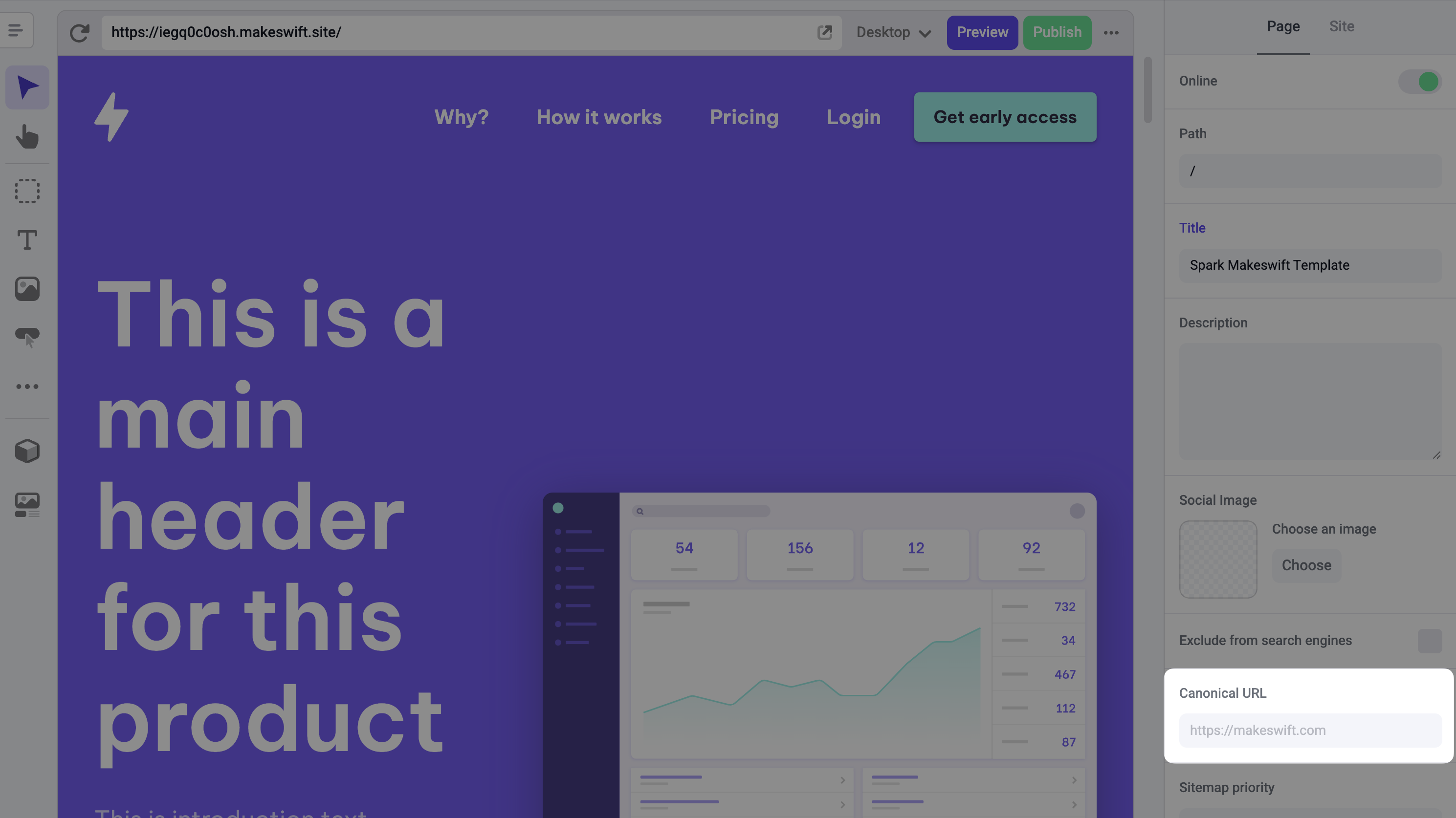
Make sure Canonicals are indexable. Utilize the Exclude from Search
Engines checkbox property to manage this.
XML Sitemaps
For users on the default host, Makeswift will automatically generate an XML sitemap for you based on properties available to you on each page.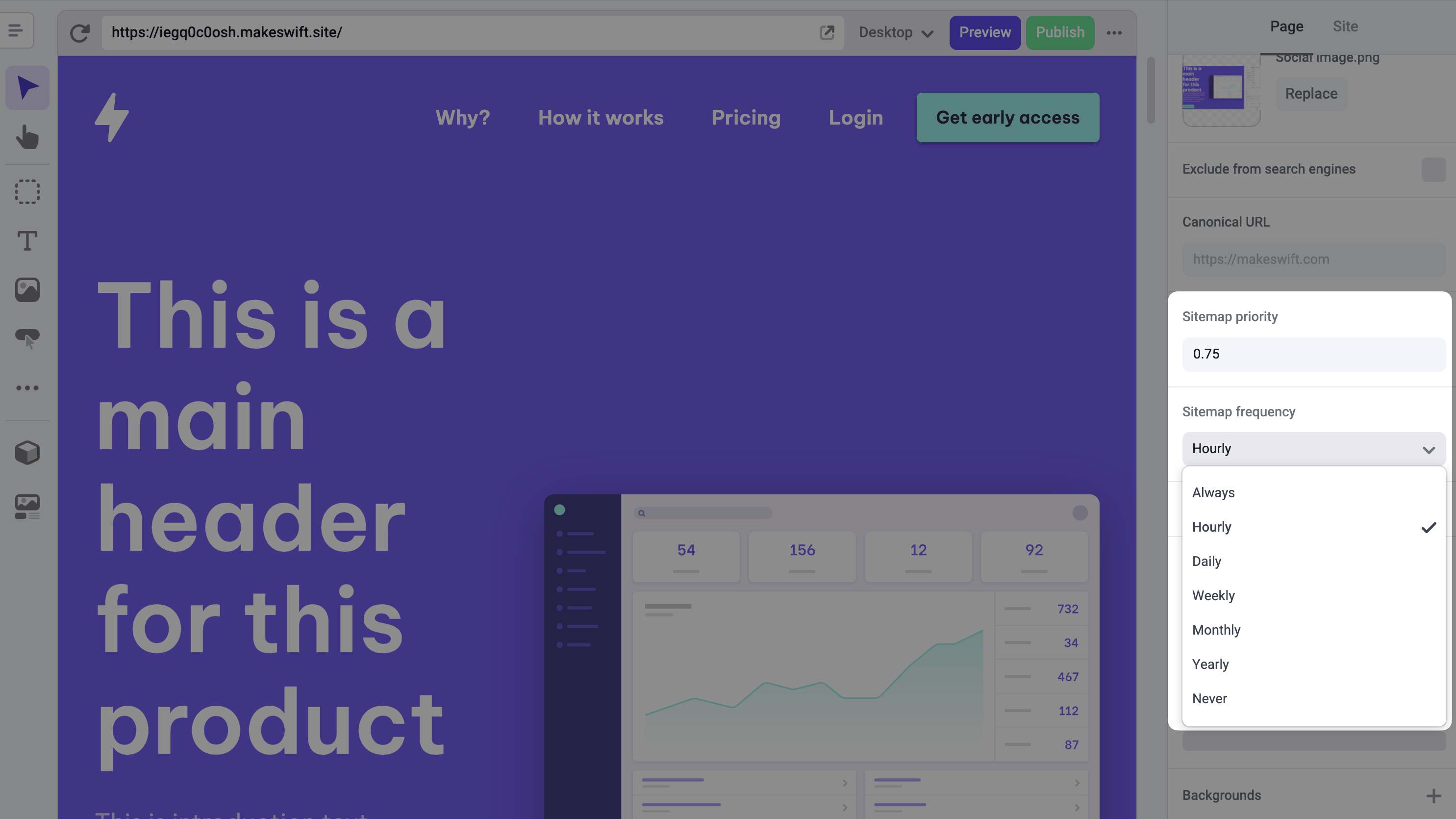
Sitemap priority
Sitemap priority is a value from 0.0 to 1.0 assigned to URLs in a sitemap to indicate their relative importance. This helps search engines prioritize which pages to crawl and index first. By default, each new page you create will be given a value of 0.75Your homepage or other critical landing pages should have a Sitemap Priority
value of 1.0
Sitemap frequency
Sitemap frequency, also known as “change frequency” or “changefreq”, is an attribute in a sitemap that indicates how often a particular URL is likely to change.- Always: Used for pages that change constantly, such as live data feeds.
- Hourly: For pages that update every hour.
- Daily: For pages that change daily, such as news articles or blogs.
- Weekly: For pages that are updated weekly.
- Monthly: For pages with monthly updates.
- Yearly: For pages with annual updates.
- Never: For pages that never change, like archived content.
Meta tags
Page metadata covers some of the essential SEO Metadata controls that can get you started quickly. Leverage the ability to edit title tags, meta descriptions, and social images on an ongoing basis to optimize for relevant keywords and accurately reflect the content of each page.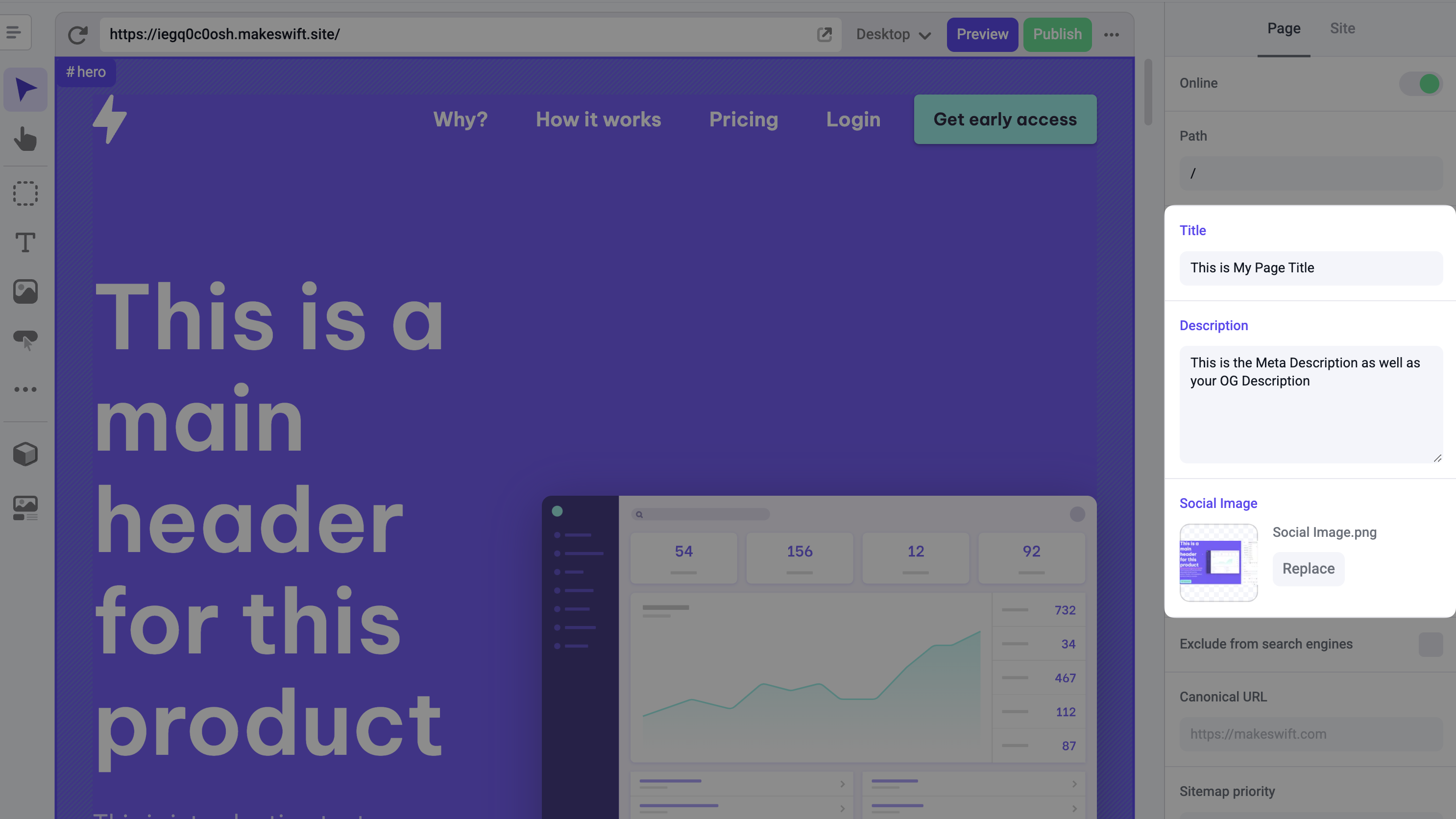
Internal linking structure
Internal linking structure refers to the way links are organized within your website, connecting different pages and content. Review and optimize the internal linking structure to ensure that important pages are easily accessible and properly prioritized for search engines. Prioritization is controlled within the Page tab in the panels sidebar.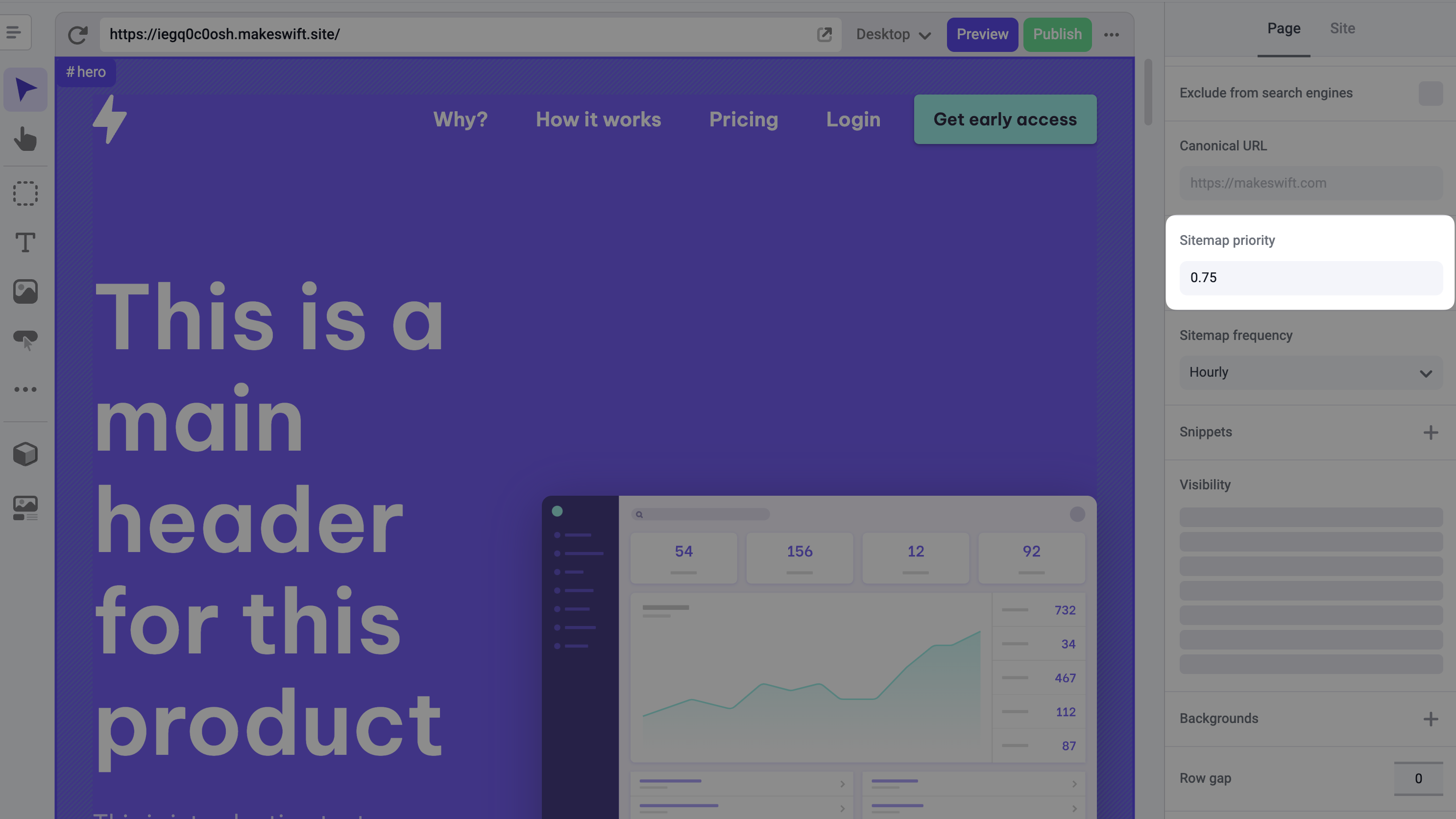
Redirects
301 redirects are essential for SEO as they allow you to prevent visitors from seeing 404 messages for page that no longer exist. If you are using the default host, you are able to configure redirects directly within Makeswift.Image optimization
Optimize image file names and alt text to improve accessibility and provide additional context for search engines. File names can be managed through the files manager and alt tags can be managed on each individual image within a page.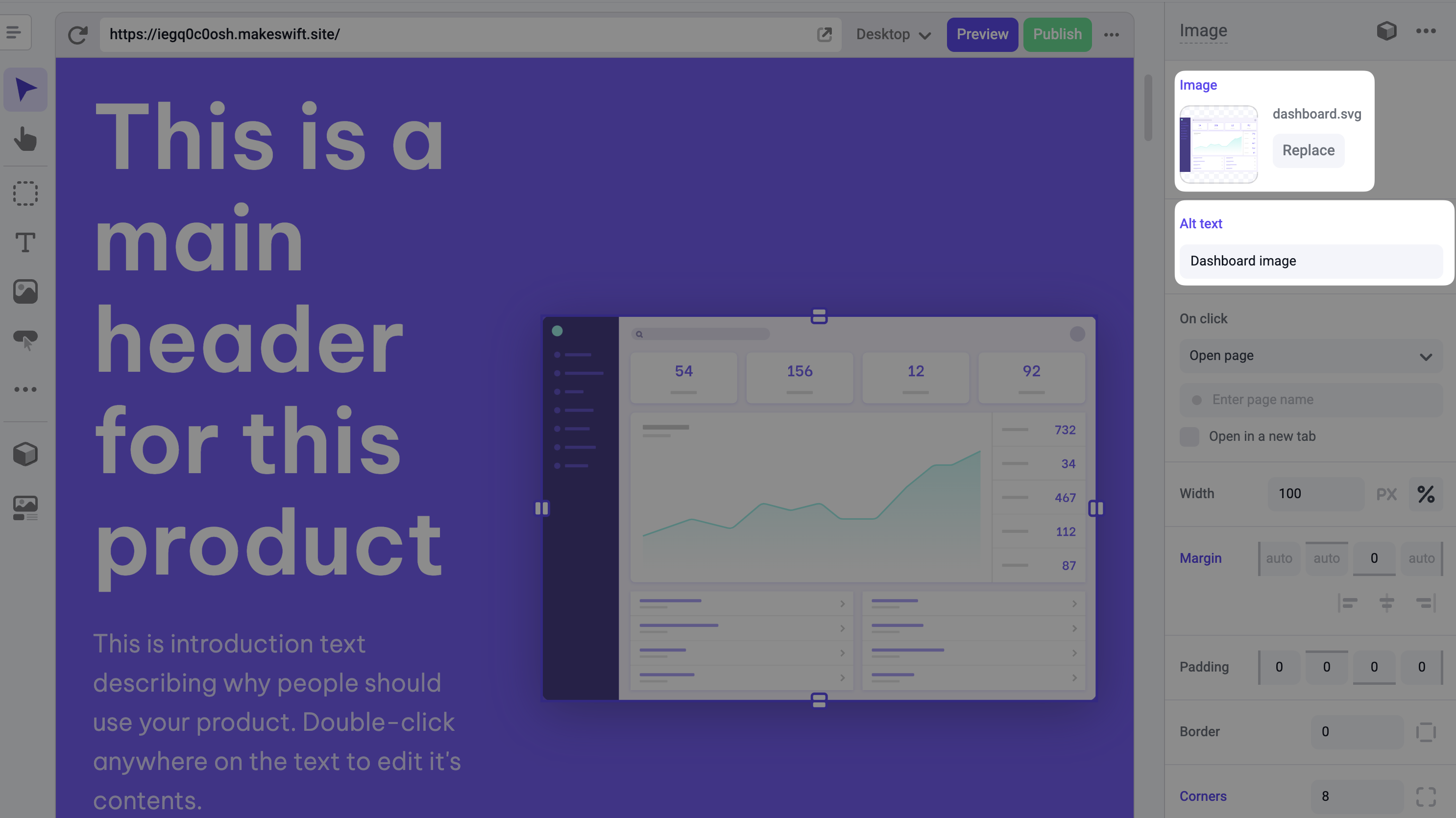
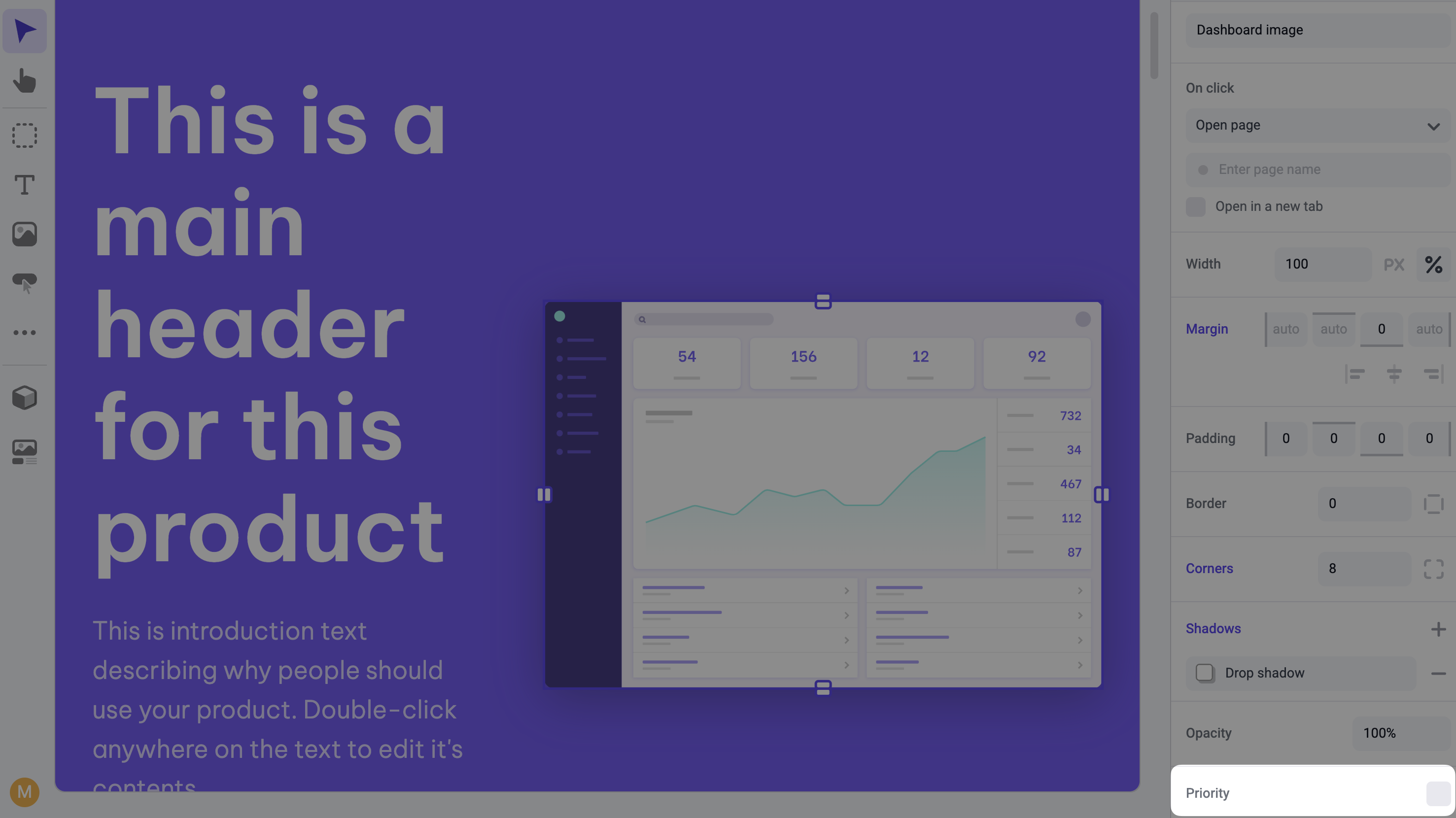
SSL certificate
All Makeswift pages automatically generate SSL certificates at no extra cost. Once your DNS has fully connected to Makeswift, it may take a little more time for the SSL certificate to be generated.Mobile-responsiveness
Mobile responsiveness is crucial because Google predominantly uses the mobile version of a website for indexing and ranking. If your site isn’t mobile-friendly, it can negatively impact your search engine rankings. Makeswift automatically handles many aspects of responsive design but we recommend changing device modes to ensure every page is optimized for all breakpoints.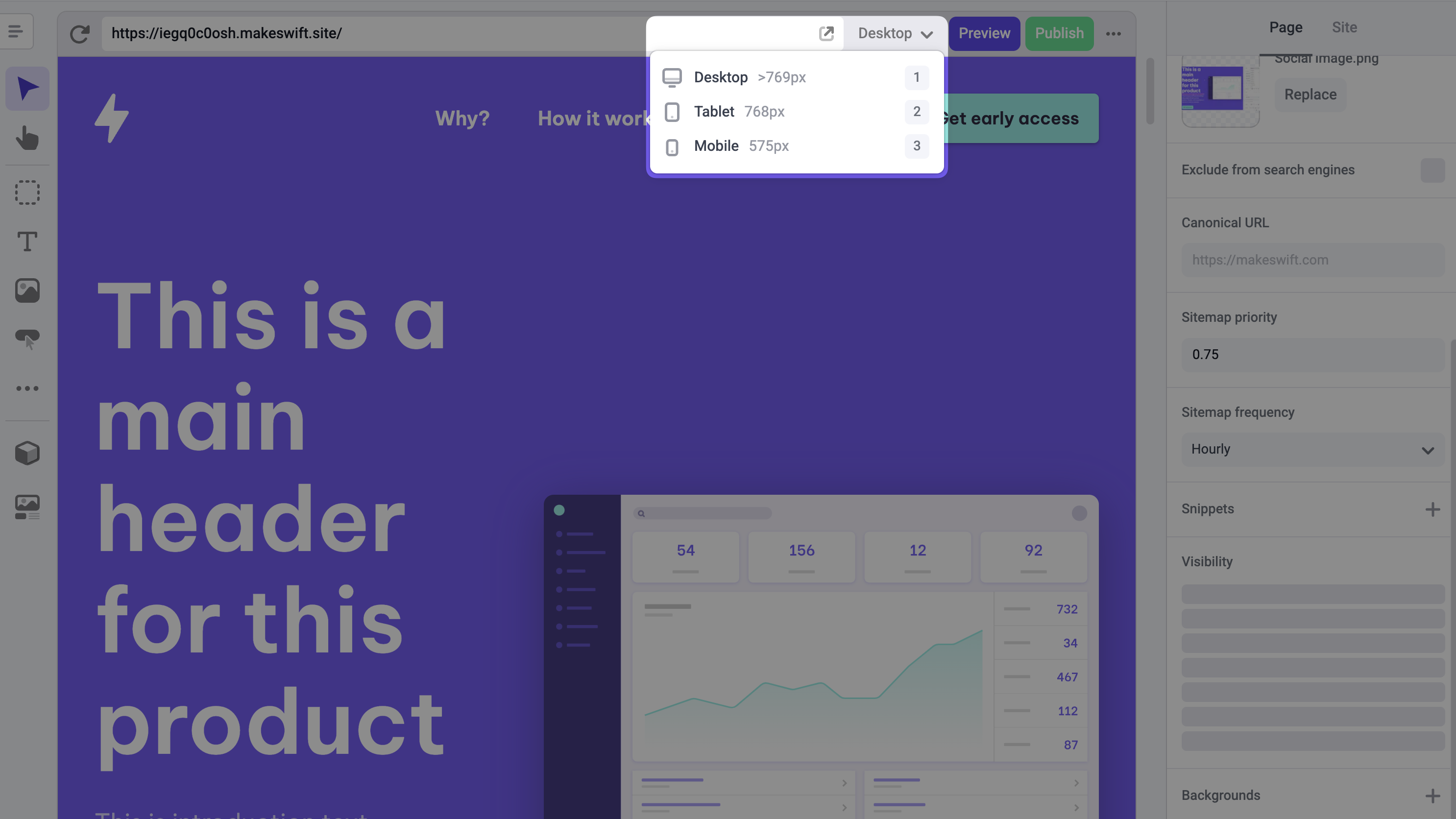
Favicon
While favicons might not directly influence search rankings, they support a positive user experience and reinforce your brand, which can indirectly impact SEO through improved engagement metrics and user behavior. Favicons are the icons that are displayed in your browser tab. This can be configured in the site settings within Makeswift.Managed in code
More advanced SEO requirements will need to be managed directly in your codebase. The guide below outlines some additional SEO concepts to consider, but their application is not specific to Makeswift.robots.txt
The robots.txt file is used to ensure that search engines can crawl a new site properly and that sensitive or duplicate content is blocked as necessary.
Learn
more
about
robots.txt. Utilize Screaming
Frog to crawl legacy websites
and the new website to compare.Additional sitemaps
Generate a new XML sitemap for the migrated website and submit it to search engines to ensure all pages are crawled and indexed properly. 404’s shouldn’t be in sitemaps. Watch out for duplicates. Typically there is an.xml index sitemap and larger sites may need a separate sitemap (e.g. articles). There’s a limit to sitemaps (50k) but having different sitemaps is easier to manage.
Page speed optimization
Test the loading speed of a new website and optimize it to improve user experience and search engine rankings.We recommend running PageSpeed Insights on pages
before launching a site. It is the developer’s responsibility to ensure
JavaScript optimizations are implemented.
SSL Certificate
If the website is migrating toHTTPS, ensure that an SSL certificate is properly installed and configured to provide a secure browsing experience for users and boost search engine rankings.
Vercel will try to automatically generate a certificate regardless
